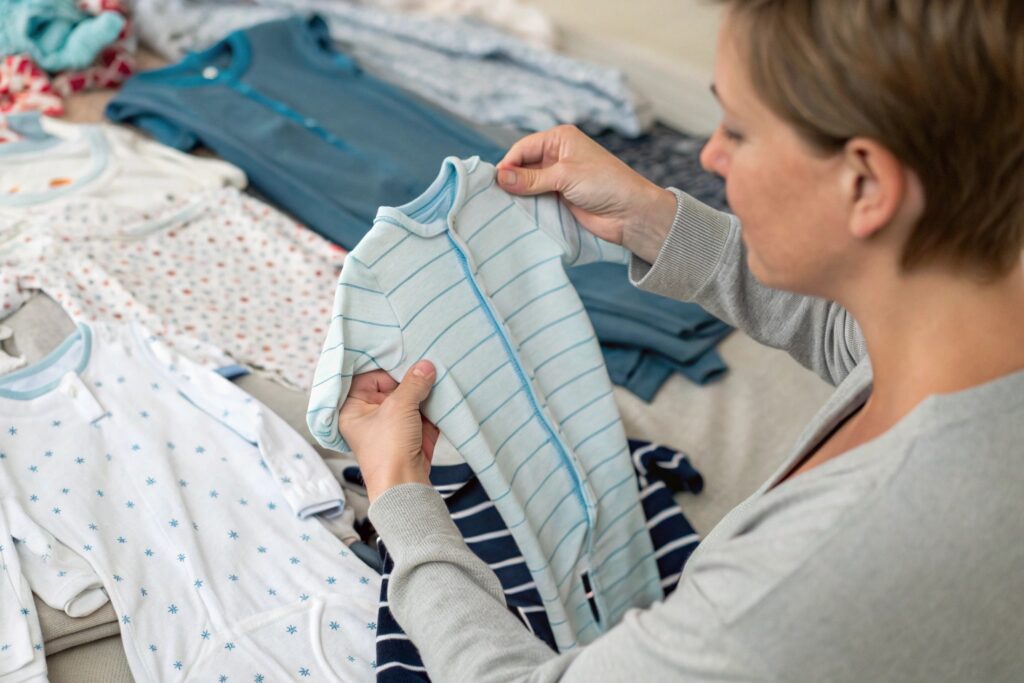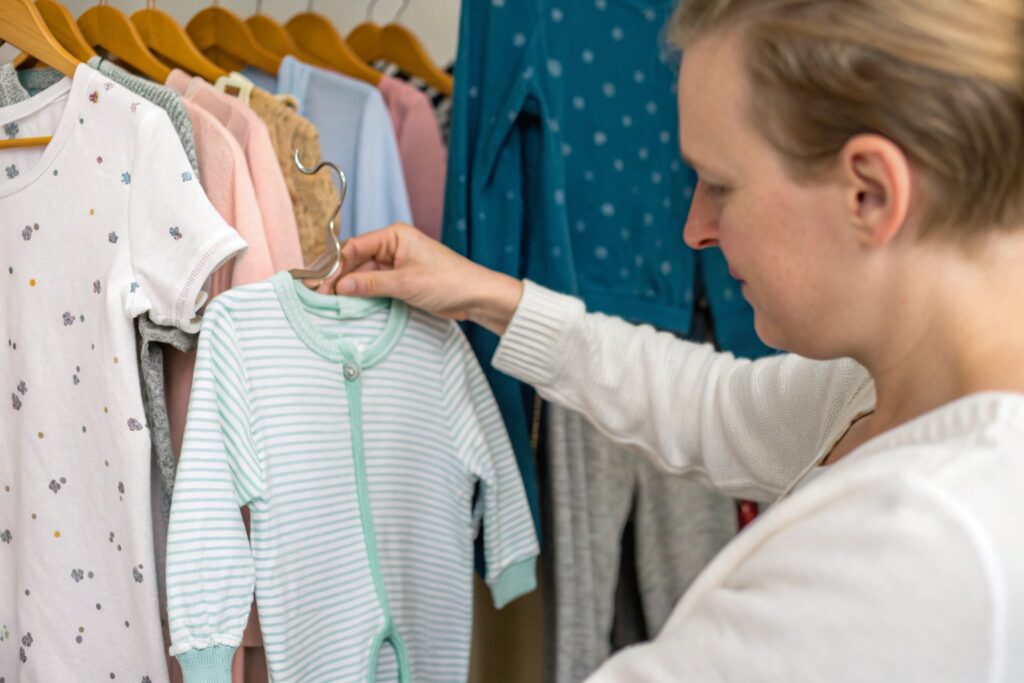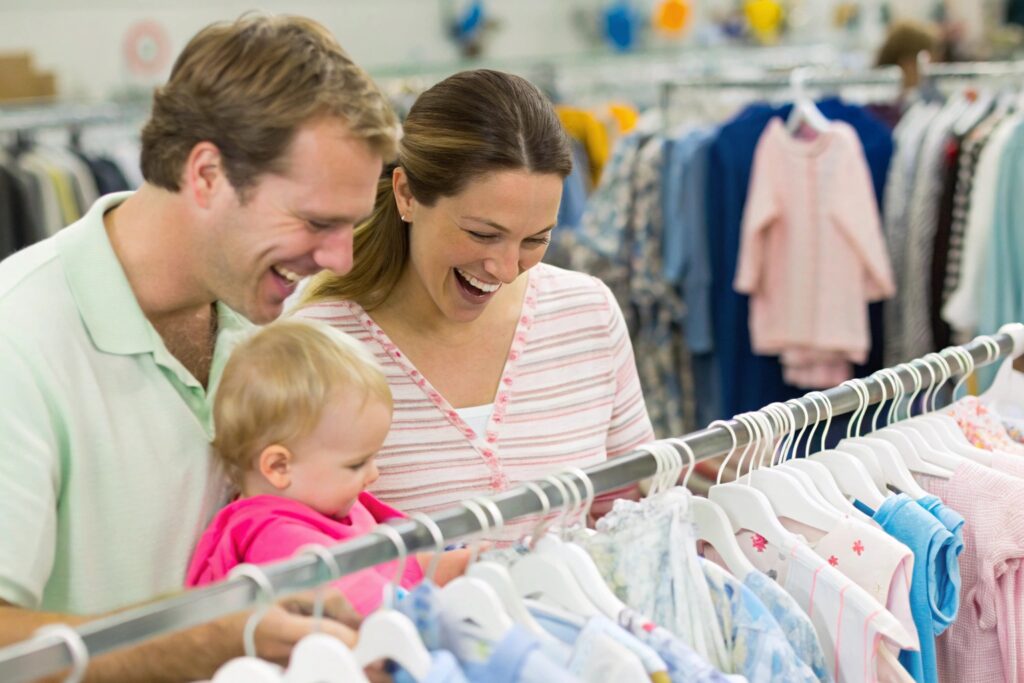For many families, thrift shopping is more than a trend—it’s a smart, sustainable way to keep up with growing kids. But is it really okay to dress children in secondhand clothes?
Yes, it’s absolutely okay to buy kids’ clothes from a thrift store—as long as they’re clean, safe, and in good condition. Thrifted clothing offers both economic and environmental benefits.
Let’s walk through what parents need to know to thrift with confidence.
Are Secondhand Clothes Safe and Clean for Children?
Safety is the top concern for parents considering used clothing—but with the right checks and washing, thrifted kidswear can be just as safe as new.
Secondhand clothes are safe for children if they are thoroughly inspected for damage, washed properly, and free from recalled features like drawstrings or hazardous trims.

What to check before buying:
| Safety Concern | What to Look For |
|---|---|
| Loose buttons/snaps | Check all fastenings are firmly attached |
| Frayed or unraveling seams | Can pose risk for infants and toddlers |
| Tight or shrunken areas | May cause discomfort or poor fit |
| Recalled styles | Avoid items with drawstrings near neck |
| Strange odors or stains | Skip any items that can’t be cleaned fully |
Buying from reputable stores or curated secondhand shops can add another layer of peace of mind—many pre-check all garments before shelving.
How to Check Thrifted Kidswear for Quality and Fit?
Even a great deal isn’t worth it if the item falls apart—or never fits. Thrift shopping means you’ll need to inspect each piece like a mini-quality control expert.
To get good value from thrifted kidswear, check for durable stitching, fabric integrity, and actual fit—since tags may not match true sizing.

Thrift store quality checklist:
| Feature to Check | What to Do Before Buying |
|---|---|
| Fabric condition | Hold up to light to check for thinning |
| Elasticity | Test stretch in waistbands and cuffs |
| Label condition | Faded or missing tags can mean heavy wear |
| Sizing vs actual fit | Compare with a known item or hold up to your child |
| Pilling or holes | Small snags can expand with washing |
If possible, bring your child’s current shirt or pants to compare length and width—especially since baby and toddler sizing can vary between brands.
Look for brands known for durability like Carter’s, OshKosh, or H&M Conscious Basics, which hold up well through multiple wears.
Why Thrift Shopping Is Budget-Friendly and Sustainable?
Kids grow out of clothes fast—sometimes in a matter of weeks. That makes thrift stores one of the smartest ways to save money and reduce environmental impact.
Thrift shopping for kids saves families money while reducing textile waste—making it a budget-conscious and eco-friendly choice.

Why more parents are thrifting:
| Benefit | Why It Works for Families |
|---|---|
| Lower prices | Often 70–90% cheaper than retail |
| Fast turnover | New stock daily = more options |
| Eco-conscious buying | Keeps clothes out of landfills |
| Unique finds | Discover fun styles no longer in stores |
| Great for growth spurts | Cheaper way to replace frequent size changes |
A 2024 report by ThredUp found that 1 in 2 parents now buy at least some kidswear secondhand—especially for everyday playwear, jackets, and special occasion items.
Plus, buying used means your money stretches further—so you can prioritize higher-quality shoes, outerwear, or custom items elsewhere.
Tips for Washing and Prepping Used Kids’ Clothing?
Before secondhand babywear or toddler clothes hit your child’s skin, they need a proper refresh. A good wash does more than remove dirt—it ensures safety.
Thoroughly washing secondhand clothing with baby-safe detergent helps eliminate allergens, bacteria, and odors—making them fresh and safe for kids to wear.

How to prep thrifted babywear:
| Step | Purpose |
|---|---|
| Pre-sort by fabric | Delicate fabrics need gentler cycles |
| Soak in warm water/vinegar | Neutralizes odors and softens stiff fabrics |
| Use hypoallergenic detergent | Safe for sensitive skin |
| Dry in sunlight if possible | Natural disinfectant, reduces mildew |
| Steam or iron if needed | Removes wrinkles and kills hidden germs |
For newborns or infants under 6 months, consider running a hot water cycle with an extra rinse—especially for bodysuits, bibs, or swaddles.
Avoid dry cleaning secondhand babywear, as residues may not be skin-safe unless clearly labeled organic.
Conclusion
Yes—it’s more than okay to buy baby and kids’ clothes from thrift stores. With a careful eye and a good wash, secondhand clothing can be safe, affordable, and eco-smart. Whether you’re stocking up on basics or hunting for unique finds, thrift shopping is a thoughtful and practical choice for growing families.










